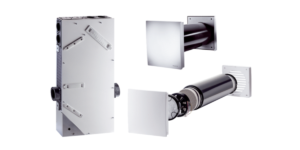Decentralised Ventilation Systems
Decentralised ventilation systems have become a game-changer in the quest for healthier indoor environments. This article delves into the various aspects of these systems, explaining their mechanisms, benefits, and the impact they have on overall energy efficiency.
Understanding Decentralised Ventilation
Decentralised ventilation focuses on distributing fresh air throughout a building in a more localized manner. Unlike traditional centralized systems, these decentralised setups offer targeted solutions for specific areas, ensuring a tailored approach to indoor air quality.
Benefits of Decentralised Ventilation Systems
Enhanced Indoor Air Quality
Decentralised systems effectively remove pollutants, allergens, and excess humidity, creating a healthier environment for occupants.
Energy Efficiency
By distributing fresh air precisely where needed, these systems reduce energy consumption compared to traditional HVAC systems. This not only benefits the environment but also leads to cost savings.

Cost-Effective Installation
The decentralized approach allows for easier installation, especially in existing structures. This can be a significant advantage in terms of both time and expenses.
Implementing Decentralised Ventilation
Strategic Placement of Units
Proper placement of decentralised ventilation units is crucial for optimal performance. Identify key areas where air quality is a priority and strategically install units accordingly.
Integration with Smart Building Technologies
Maximize the efficiency of decentralised systems by integrating them with smart building technologies. This ensures dynamic adjustments based on real-time data, further enhancing performance.
Decentralised Heat Recovery
Decentralised Heat Recovery is a crucial aspect often associated with advanced ventilation systems. This process involves capturing and reusing heat generated within a building, contributing to overall energy conservation. Decentralised heat recovery not only ensures a more sustainable approach to energy use but also plays a vital role in reducing heating costs. By harnessing and redistributing heat within a structure, these systems contribute significantly to environmental preservation.











